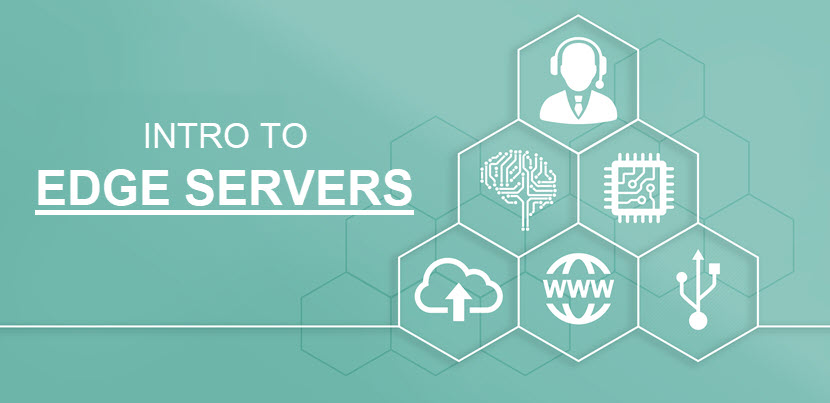While edge servers are similar to traditional servers, they operate from non-traditional locations. Edge servers process data close to end users, in smart homes, IoT powered factories, hospitals, and self-driving cars. This article provides a detailed look at edge servers, their role in the IT landscape and how they work.
What is an Edge Server
An “edge server” is a piece hardware that performs computations at the end of a network. Like a regular server, an edge server can provide compute, networking, and storage functions. Edge servers process data physically close to the end-users and on-site apps, so these devices process requests faster than a centralized server. These devices do not send unprocessed data to and from data centers, but instead process the raw data to return it to clients. There are two types of edge servers: Content delivery network (CDN) edge servers:
A CDN edge server is a computer with cached versions of static content from an origin server (images, JavaScript files, HTML files, etc.).
There are two types of edge servers:
Content delivery network (CDN) edge servers:
A CDN edge server is a computer with cached versions of static content from an origin server (images, JavaScript files, HTML files, etc.). The company can deploy CDN servers at different points of presence across the content delivery network.
- Edge computing servers: These servers provide compute resources at a network’s edges. Edge servers are different from devices. The term “
- edge device” refers to hardware that provides an entry point to a network (such as a router or switch).
Learn more about edge computing and see how placing workloads at the network’s edge can boost performance in various use cases and settings.
Edge Server vs Origin Server
A CDN edge and origin server typically work in tandem to deliver content to end-users. Both devices are capable of similar tasks, but play different roles during the content delivery process. Responses may be delayed depending on the distance from the origin server to the user. A CDN edge server reduces latency significantly by sitting between an origin server and a client machine. The edge server returns the static content to the user without consuming bandwidth from the origin server. When using a CDN, an origin server is essential as it hosts operations which are not safe for the edge. Good examples are databases of hashed client credentials used for authentication or vulnerable backends.
Edge Server vs Cloud Computing
Cloud computing is the act of running a workload on a cloud, a software-defined environment created by a data center or server farm. Edge computing is running a workload outside of the data center on an edge computer, which is a piece hardware. Edge servers can become part of the cloud by abstracting their storage and computing resources. There is no set definition on how close the server must be to either endpoint. Therefore, there are four types of edges:
- Device edge (the server is a component within the end-user device).
- On-prem edge (nodes physically located in the local network or facility).
- Network edge (network specific nodes such as base stations or telco data centers).
Regional edge. There is no set definition on how close the server must be to either endpoint, so there are four types of edges:
- Device edge (the server is a component within the end-user device).
- On-prem edge (nodes physically located in the local network or facility).
- Network edge (network-specific nodes such as base stations or telco data centers).
- Regional edge (the server is in a traditional local data center).
- Here is an example of how an edge compute server that sits between IoT devices in a factory and the enterprise data center works:
- Various IoT devices on the factory floor (cameras, thermometers, sensors, etc.) interact with and send data to local edge compute servers.
- Servers provide local processing, storage, and data analysis to give visibility into production.
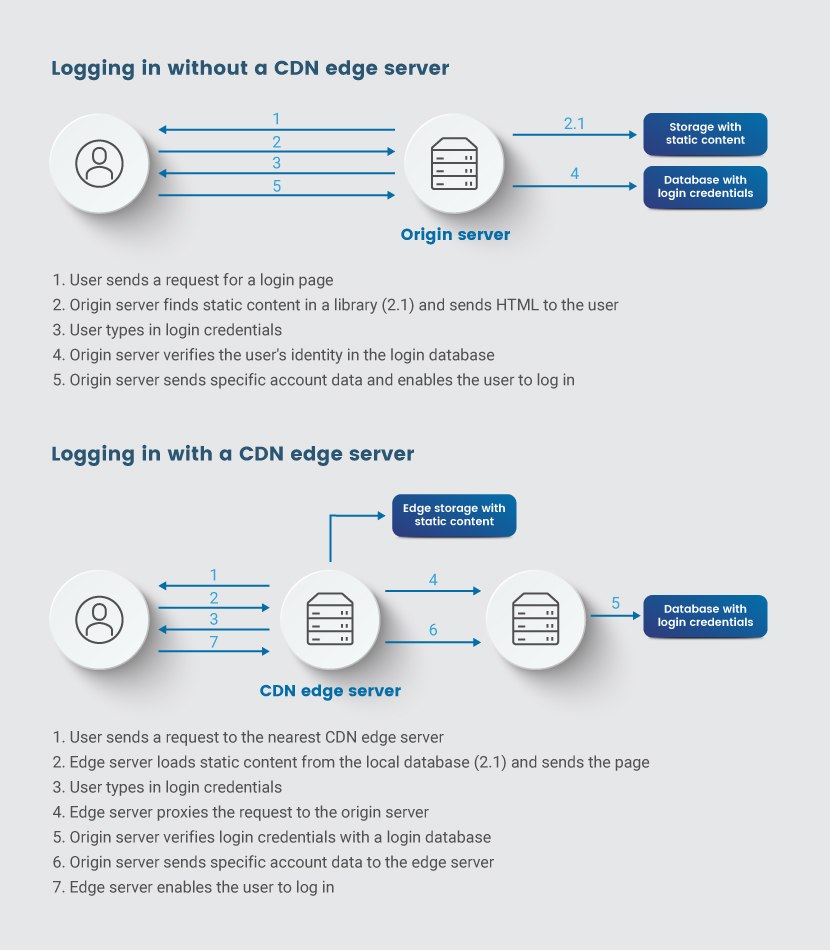
If an IoT sensor registers, for example, a risky increase in a machine’s temperature, the edge server recognizes the issue in real-time.
The edge server stops the production before the machine overheats.
The edge compute server sends relevant processed data to a corporate data center where humans can make a maintenance plan.
In this example, the edge server significantly reduces bandwidth to and from the corporate data center. The edge server reduces bandwidth to and from the corporate data center by sending relevant processed data. Edge servers are a great solution for situations where you can’t deploy bulky, standard servers. Here are some examples of how companies put edge servers to use:
Servers within IoT sensors on industrial equipment.
Surveillance sensors that have a local server for real-time data analysis.
- An app that streams movies and TV shows through an edge server with cashed videos.
- Hybrid cloud architecture in which centralized computing handles compute-intensive workloads while an edge server addresses workloads that need real-time processing.
- A banking app that uses an edge server for quick performance but isolates sensitive data on the origin server.
- IoT devices that perform in-hospital patient monitoring.
Edge servers that provide remote monitoring of oil and gas assets.
- Self-driving cars that collect large volumes of data and make decisions in real-time.
- Our software-defined edge computing servers are an ideal choice for any use case with low-latency and real-time processing demands.
- New Bare Metal Cloud Edge location launched in Austin, Texas!
- Advantages and Disadvantages of Edge Servers
- Like most technologies, edge servers have specific benefits and drawbacks. We will examine edge servers more closely.
Advantages
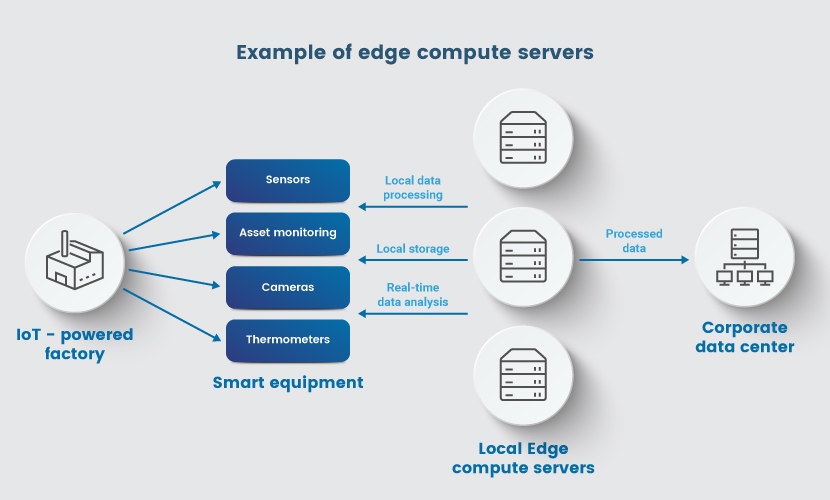
Here are the main benefits of using an edge server:
Reduced latency:
- End-users experience better performance and faster loading times when they request content from a geographically closer server. In an industrial setting, the lack of latency means IoT and AI-powered devices can make split-second decisions and immediately respond to a risky situation.
- Reduced origin server workload:
- Sudden traffic spikes can impact the performance of an origin server. As a CDN server takes on most client requests in a region, your origin server is less likely to experience performance issues.
- Increased origin server security:
- A CDN edge server hides the origin server’s IP address and proxies requests from clients. This networking model improves data integrity and privacy while reducing the origin server’s exposure to DDoS attacks.
- Reduced bandwidth requirement (and cost)
- : An edge server reduces the need to exchange data with external networks. The ability to reduce bandwidth and costs is a result of this capability. Also, since you no longer store or process data on a centralized system, you limit the consequences of a successful data breach.
- Better availability:
Even if the origin server goes down, edge servers can maintain the functions in the local network. This capability is good for customer experience but vital for healthcare apps and critical control systems.
Greater computing capacity:
Edge servers provide computing capabilities that supplement limited local devices.
Disadvantages
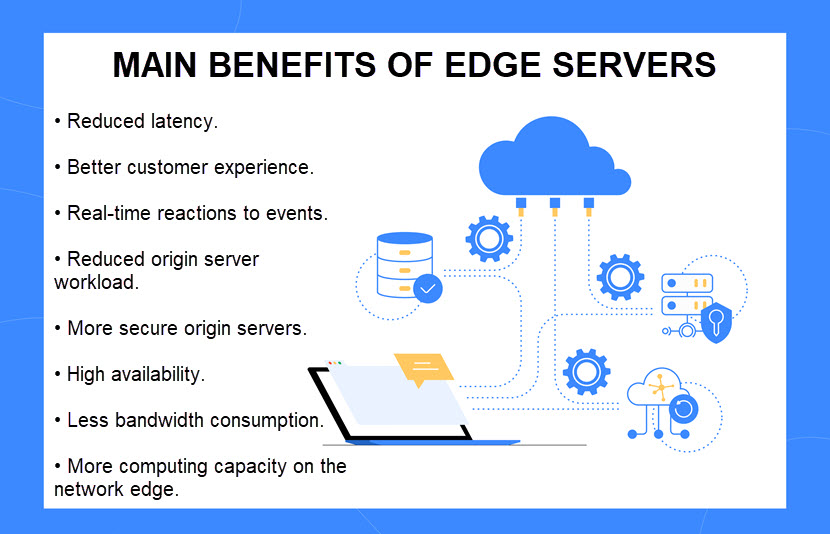
There are also some downsides to using edge servers. If you are considering deploying an edge server, you should keep the following disadvantages in mind:
Challenging maintenance: Since edge servers operate in different geographic locations, companies must define processes for monitoring, maintaining, and updating their equipment. Handling these tasks in-house is challenging, while outsourcing server management leads to additional costs and coordination challenges.
Bigger attack surface:
- While edge servers offer security boosts in some areas, more servers mean more potential entry points into the network. If you fail to maintain an edge server properly, it can lead to data breaches or leaks. Also, security risks on a local level (such as inexperienced teams and weak passwords) complicate cybersecurity.
Not ideal for risky workloads:
- Securing data in transit over a network is typically easier than securing data during processing. Edge servers are unsuitable for high-risk workloads, sensitive data, or processes with unique compliance requirements.
Problems with high data volume:
- Workloads with extreme data volumes can impact the performance of an edge server. It is expensive to deploy and maintain multiple geographically distributed servers. Data loss is a risk for many edge servers that discard irrelevant data to deal with high volume of information. If the server discards relevant data by mistake, there is typically no way to retrieve the lost info. Our article on edge computing challenges goes in-depth into the problems of edge servers and, more importantly, how to solve these issues.
The Future of Edge Hardware
- Here is a quick overview of what you can expect to see from edge servers in 2022:
- Hardware-as-a-service: “As-a-Service” business model for edge hardware will continue to rise in popularity as companies look to eliminate upfront investments in edge equipment. We expect growth of both the subscription and consumption-based models, plus an increase in managed services for edge hardware.
- Convergence of storage and compute resources: Converged infrastructure enables a piece of hardware to have both storage and compute resources. Companies with ultra-low latency use cases will continue to push towards computational storage to reduce the amount of data moving between the library and compute plane.
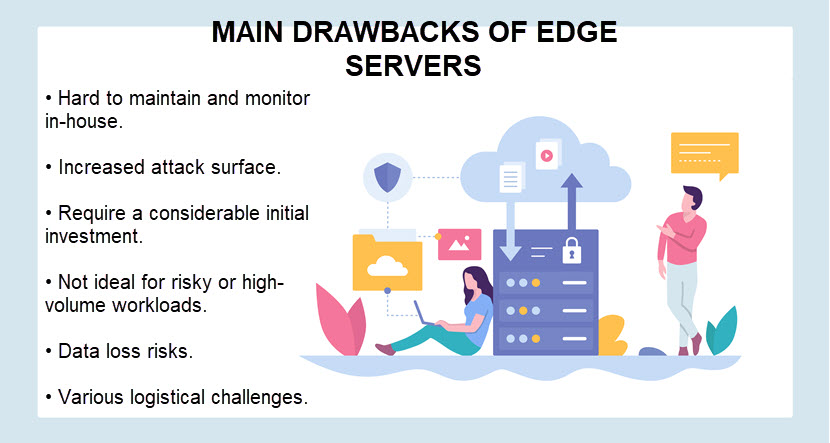
Breakthroughs in 5G:
Edge servers will continue to help telco companies handle 5G traffic. A server at the edge of a cell-tower will be crucial for low-latency applications such as cameras and smart cars. Edge servers can also improve the speed and reliability of a hybrid system. They can also significantly improve the speed and reliability of a hybrid system.
- The rise of confidential computing: Besides at-rest encryption for local storage and in-transit protection, setting up confidential computing at edge hardware will become a priority as companies look for ways to protect data during processing.
- PhoenixNAP’s confidential computing enables you to deploy end-to-end encryption and ensure data remains safe at all times, both on-site and within edge servers.Is Your Use Case a Good Fit for Edge Servers?
- Edge servers have some unique challenges, but the benefits of edge computing are hard to ignore. Edge servers can help you discover new business opportunities and improve operational efficiency. They also provide a faster, more reliable experience for customers. These advantages outweigh any drawback, so you should definitely consider edge servers if your use case can benefit from local data processing.Check out our article on
- IoT edge computing and the benefits of taking action on data as close to its source as possible to learn more.
